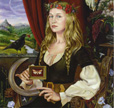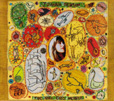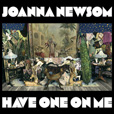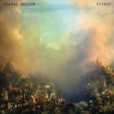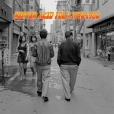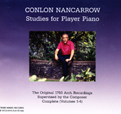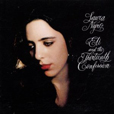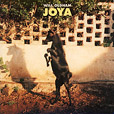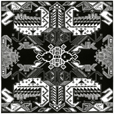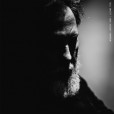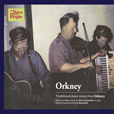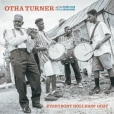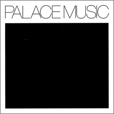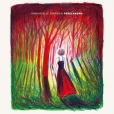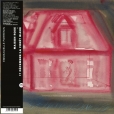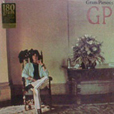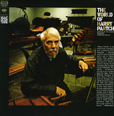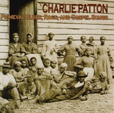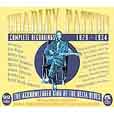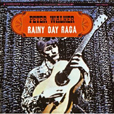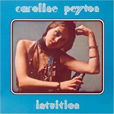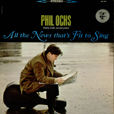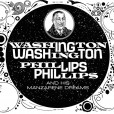Your basket is empty

The definitive recordings, using Noncarrow’s original instruments — two Ampico player pianos, one with metal-covered felt hammers and the other with leather strips on the hammers.
Forgotten masterpieces, out-of-this-world improvisations from the 1920s; and dazzling commissions by Sir Richard Bishop, Six Organs Of Admittance and co. ‘Dextrous, frenzied, fearless… awesome’ (Plan B).
‘Returns to original composition and the blues… with a freshness and authority that nostalgic retreads cannot deliver… Three songs (Odds Against Tomorrow, The Writhing Jar, Already Old) are multi-tracked, an innovation that, for guitar buffs familiar with Orcutt’s stripped-down vernacular, jumps out of the grooves like a Les Paul sound-on-sound excursion in 1948, or a Jandek blues rave-up in 1987. Specifically evoking John Lee Hooker’s double-track experiments on 1952’s Walking the Boogie, the steady chord vamps of Odds Against Tomorrow and Already Old form a harmonic turf on which Orcutt solos with lyrical abandon. The Writhing Jar’s crashing overdubs recall the brassy six-string voicings of This Heat or Illitch. With the exception of the unreconstructed Elmore James-isms of Stray Dog’ and the Layla-finale-like haze of All Your Buried Corpses Begin To Speak, the remaining non-overdubbed tracks dovetail snugly with Orcutt’s previous solo output, reeling gently in a Mazzacane-oid mode or vibing up the standards (Moon River)... Odds Against Tomorrow challenges contemporary solo guitar practice in a way that simultaneously nullifies hazy dreams of folk purity and establishes a new high-water mark for blues-rock reconstruction” (Tom Carter).
1955 field recordings made by Peter Kennedy: fiddles, tin whistle, accordion.
‘The trance blues stylings of Otha Turner and his Rising Star Fife And Drum Band should be a music classification unto itself, a whole new primitive take on drum and bass. This music is the oldest still-practiced post-colonial American music, and Turner was one of its greatest artists of the 20th century. Blowing the cane fife with a band of drummers as back up, The Rising Star Fife And Drum band was legendary in the hills of Tate County, Mississippi, where they would perform during the yearly goat picnics on Turner’s farm. These tracks were recorded by Luther Dickinson during such picnics and released when Turner was ninety years old. Everybody Hollerin’ Goat shows firsthand the hypnotic and rhythmic style of fife and drum music at its best — raw and beautiful. It is every bit as essential a document of America’s folk-music heritage as anything Harry Smith or Alan Lomax ever offered up for posterity. This first ever vinyl release of Everybody Hollerin’ Goat contains a whole side of unreleased recordings from one night of the picnic and is intended to bring the experience of hollerin’ for goat in Senatobia, Mississippi to the living room. Dancing around the plants is recommended (but don’t eat the pickled eggs).’
Previously unreleased recordings from 1978, 1981 and 1982, conceived for choreographers. The bandoneon-playing of the Argentinian Juan Mosalini, electric piano by Jacques Denjean, electroacoustics by Bruno Menny and Didier Malherbe from Gong are swirled into a mix of spinet dulcimer, flute, hurdy-gurdy and other-worldly singing (amongst other ingredients), all steeped in the sonic atmosphere of a vintage acid-folk freak-out.
Warmly recommended.
Recorded in 1977, the obverse of punk, these are mysterious, gentle songs, simultaneously ancestral and futuristic, occasionally mounting in rhythmic urgency to evoke the Motorik of Faust. (Have a listen to Topaze.) Some were collected by Parrenin in rural communities; others have lyrics by Jean-Claude Vannier, who attended the recording sessions.
The engineer was Bruno Menny — a follower of Xenakis — whose 1972 Cosmographie LP is a landmark in French electroacoustic music. He recorded Parrenin in the converted barn of Jacques Denjean, who worked with Dionne Warwick, Francoise Hardy and the Double Six. (The great Albert Marcoeur recorded two albums there, in Fremontel, Normandy.)
‘If we must risk a few comparisons then Vashti Bunyan, Linda Perhacs, Joanna Newsom, Collie Ryan, Shirley Collins, Trees Community, Sourdeline and Véronique Chalot all spring spontaneously to mind. But this is too reductive for the timeless singularity of Emmanuelle Parrenin.’
This is a great way into Partch, revisiting with gusto three well-known, relatively-compact works — a highly rhythmic dance piece, a cross-cutting film score, and Barstow, with HP intoning hitchhiker graffiti.
His 1966 debut for Vanguard, evocatively fusing psych-folk and raga way ahead of its time; also featuring flautist Jeremy Steig and long-time Dylan cohort Bruce Langhorn.
Vinyl from Harte.
Jazz-folk originally issued in 1977 by the BRBQ label out of Bloomington, Indiana; reissued here with extras by Numero.
